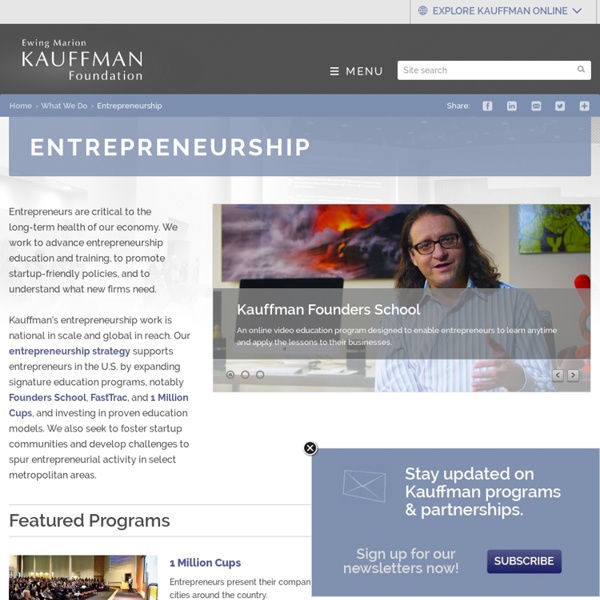Entrepreneurship at the Kauffman Foundation

Corporate Social Responsibility and Sustainability News, Press Releases, Feeds, Events and More
Fellows Venture Pages | learn-serve.org
Fellows Venture Pages 2014 LearnServe Fellows What’s the next big idea? Visit the LearnServe Fellows’ websites below and get a sneak preview of more than 60 brand new entrepreneurial ideas designed to make the Washington DC area – and the world – a better place! (*Featured sites marked with an asterisk) Finding, Inspiring, Guiding Homeless Teens (FIGHT) | Mentoring for homeless teens (Simone Banks-Mackey) ActionMapping | Empower women through scavenger hunts (Hanna-Rose Batlan) Hoop Dreams D.C. | Refurbish basketball courts around the city (Asa Canty & Matthew Smee) Operation: Support the Troops | Raise awareness and support military families (Karan Chawla) Hallway Pickers | High School bullying prevention (Alichea Crawford) Student2Student | After-school English tutoring program (Merobi Degefa) Instruments of Change | Organize performance opportunities for musicians to share their talents with the community (Myra Deng) TikkunU | Connecting South Africa and the Unites States (Ben Gips)
Lead 360 Challenge - How It Works
Super UserUncategorised Anyone under 25 can get involved: individuals, schools, clubs, faith-based or other organizations that work with kids. We spotlight the great work kids do and inspire others to put their ideas into action. Sign Up It's easy! Do Great Work How will you give back? Upload your Project Share your impact, photos and stories. Compete! You can win prizes and be recognized. The Lead360 Challenge activates communities through our own youth networks, media partners, mayors and other local officials.
Become an entrepreneur: join the Youth Citizen Entrepreneurship Competition
Young people from all regions around the world between the ages of 15 and 30 are invited to participate in the Competition and submit their best ideas and projects. The deadline for entries is Monday 30 June 2014. Winners will be invited to the award ceremony at the Entrepreneurship Summit in Berlin in October 2014, where they will present their ideas and projects to an international audience. Competition registrants have the opportunity to receive a free online training at the Entrepreneurship Campus, and to get their entries brushed up by peers and prospective experts. Entries are subject to global public voting and commenting. To all young participants: Register online;Take advantage of the free training at the online Entrepreneurship Campus;Submit your best ideas and projects;Enroll friends and colleagues to vote and comment; andBe part of a global community of creative youth entrepreneurs and peers who together are building a harmonious and sustainable society for all. <- Back to: Youth
Home - Youth Citizen Entrepreneurship Competition
Related:
Related:



